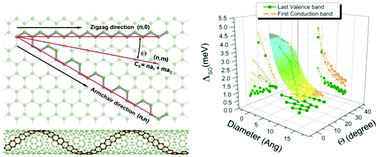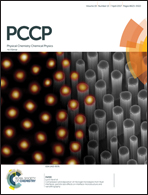Spin–orbit coupling in nearly metallic chiral carbon nanotubes: a density-functional based study
Abstract
Spin–orbit interaction in carbon nanotubes has been under debate for several years and a variety of theoretical calculations and experimental results have been published. Here, we present an accurate implementation of spin–orbit interactions in a density-functional theory framework including both core and valence orbital contributions, thus using the full potential of the system. We find that the spin-splitting of the frontier bands of armchair nanotubes is of the order of several μeV and does not strongly depend on the diameter of the nanotube. We also provide a systematic analysis of the band splitting in chiral nanotubes as a function of the diameter and the chiral angle. Very good agreement with previous theoretical studies and experimental results is overall found. In particular, our approach can be of great relevance in view of the recently discovered chirality-induced spin selectivity, since it allows us to include not only atomic contributions to the spin–orbit interaction, but more importantly, global contributions to the potential arising from the geometric structure (topology) of the system. Our methodology can thus encode effects such as helical symmetry in a straightforward way.



 Please wait while we load your content...
Please wait while we load your content...